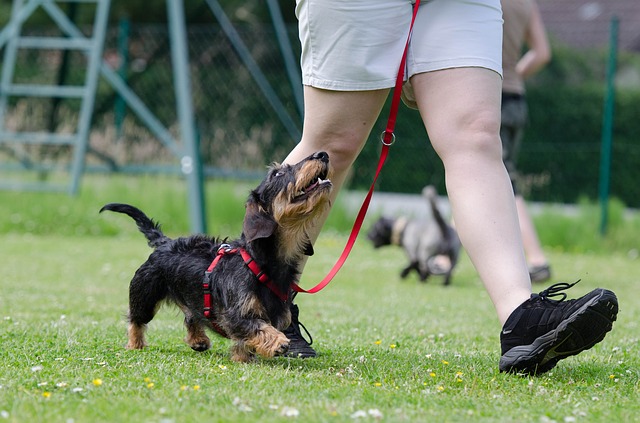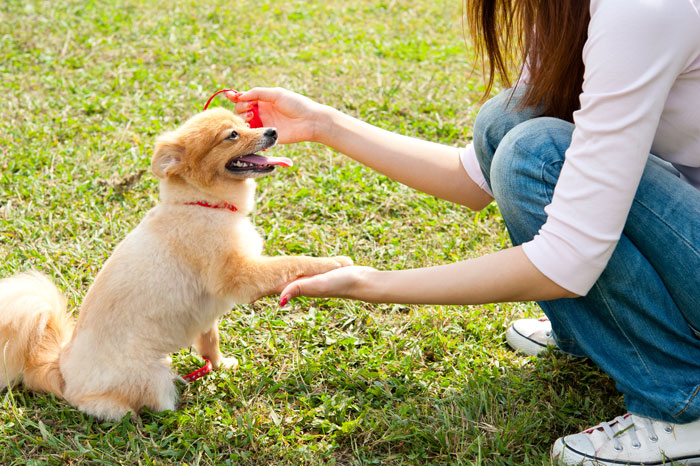Training your dog can be a fun, rewarding experience. It can also be a frustrating situation for both you and your dog. Top trainers know how to get the most of their training session and, by extension, their dog. Beginners often struggle with things like how to keep their dog engaged, what happens when a session goes wrong, and why their dog will listen to them at home, but nowhere else
The following tips will let you in on some of the training secrets of the pros.

Get Off to a Great Start
Dogs works better for people they have relationships with, it’s that simple. If the only interaction you have with your dog is when you are putting it in a crate to leave him alone for the day or when you punish him, most likely you will have a hard time getting him to work for you.
In addition, if you start each training session with something difficult right off the bat, your dog will probably struggle.
Instead, build a relationship with your dog by playing with him throughout the day. Giving him the belly rubs he loves, or scratch her ears in all the right places. Then, when it’s time to train, start your session with a game or two and then a few fun, easy cues you know your dog enjoys. Then try the hard stuff. That way, your dog is excited and jazzed for the work.

Keeping Your Dog Engaged
Think of something you really do not like doing, or is maybe hard for you – like algebra problems. Would you want to do that for an entire hour, continuously, with no breaks? Neither does your dog. Give your dog pet and/or play breaks about every 10-15 minutes, or after they do a particularly difficult behavior right, to help them stay focused and not get overly tired.
When Something Goes Wrong
It happens to everyone. Your dog has shut down for any number of reasons (not engaged, tired, confused on what you are asking of him, etc). You’re frustrated, maybe even mad. The worst thing you can do, however, is just walk away and leave the session. Your dog has learned that shutting down gets him out of work and neither of you will be enthusiastic tomorrow.
Instead, quickly switch up your training routine. Become enthuastic (even if you feel the very opposite of that), lighten the tone in your voice, and ask your dog for one or two simple cues you know they will respond to, then STOP. End the session on a good note, one you can reinforce and praise your dog for doing. Then, re-evaluate what you were doing that caused the shut down to avoid it in the future.

The Perfect House Dog
It is a common thing to hear people in an obedience class say, “ but she does it perfectly every time at home!” Dogs, unlike humans, do not generalize their learning. When we go to school and learn 1+1=2, we know that when get home.
Dogs are not like that. Just because your dog learned sit perfectly at home, in your living room, with you standing in the same spot you have asked her to sit from for 7 months, does not mean when you take one step outside, that she will sit on cue. In fact, she may not even sit if you moved her to another room in the house. So, if you go somewhere and your dog does not immediately do all the things you think your dog “knows,” wait!
First, give your dog a second to work through it. Often, your dog can work through the problem and come up with the correct answer if given some time. Then praise, praise, praise!
Second, if your dog does not get it right after two or three times, it just means she does not know it as well as you thought and you need to back up a few steps to “re-teach” her in a new environment. Don’t worry, it won’t take as long this time around and, do this enough times, in enough new places, and she will eventually generalize.

Quick Tips:
1. Do not repeat a cue unless you always want to have to say that cue twice (or four or five times). Wait for your dog to respond to the first cue
2. Set your dog up for success, not failure. Do not ask your dog to do something you know they will not do and then punish them. Instead, set them up to do something right and reward. Your dog will be much more enthusiastic about this method of training.
3. Foster a work ethic. Make your dog work for everything it wants: sit for the food bowl, a hand touch to have a ball thrown, walking nicely on the leash to get freedom to sniff.
4. Keep it short. It is better to do several, 10 minute training sessions throughout the day, than one 1 hour session. You will get more out of your dog and both of you will be happier.
Above all, have fun and praise your dog!
